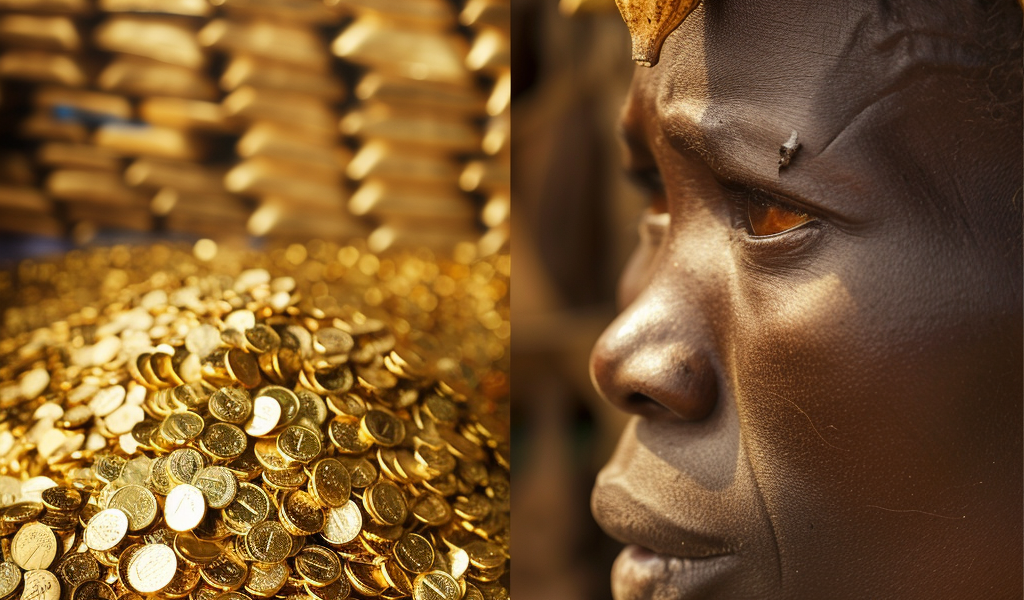Ghana’s trade surplus has experienced a notable expansion in the first half of 2024, driven primarily by a significant increase in gold exports. According to a summary of economic and financial data released by the Bank of Ghana, the favorable trade gap grew by 12.5% compared to the previous year, reaching a total of $1.8 billion.
The overall exports from Ghana surged by 13.6%, amounting to $9.2 billion. This growth was largely attributed to a remarkable 47% increase in revenue from gold shipments, which climbed to $5 billion. However, the positive impact of gold exports was somewhat offset by a drastic decline in cocoa income, which plummeted by 48% to $760 million during the same period.
The decline in cocoa revenue is attributed to several adverse factors, including unfavorable weather conditions, plant diseases, and a shortage of fertilizers. As the world’s second-largest producer of cocoa, Ghana has faced significant challenges that have impacted its output. The International Cocoa Organization forecasts that Ghana’s cocoa harvest for the season ending in September could total 501,000 tons, a decrease from 654,000 tons the previous year. This downturn in cocoa production has had a ripple effect on the country’s economy and the performance of the Ghanaian cedi against the US dollar.
In 2024, the cedi has weakened by 23% against the dollar, a stark contrast to a 10% depreciation in the same period of the previous year. This decline highlights the economic pressures facing the nation as it grapples with fluctuating commodity prices and production challenges.
In addition to the trade surplus, other key economic indicators paint a mixed picture of Ghana’s financial landscape. Oil exports saw a healthy increase of 17%, reaching $2 billion year-on-year. The current account surplus also expanded to $1.3 billion, up from $863 million, while the overall balance of payments improved to a surplus of $942 million, recovering from a deficit of $341 million.
Ghana’s gross international reserves have risen to $6.9 billion as of the end of June, compared to $5.3 billion in the same period last year. However, the country’s public debt has also increased significantly, rising to 742 billion cedis from 583 billion cedis. This increase has resulted in a debt-to-GDP ratio climbing to 70.6%, up from 69.3%.
In the banking sector, loans extended to customers grew to 84.5 billion cedis by the end of June, a rise from 73.1 billion cedis year-on-year. The growth rate of loans has slightly accelerated to 15.5%, compared to 15.4% in the previous year. Despite this growth, the rate of non-performing loans has also increased, now standing at 24.1%, up from 18.7%.
Furthermore, the mobile money sector has shown significant activity, with monthly transactions reaching 224 billion cedis in June, compared to 149.4 billion cedis in June 2023. This surge in mobile money transactions reflects the growing trend of digital financial services in Ghana, providing a convenient alternative for consumers and businesses alike.
As Ghana navigates these economic challenges, the interplay between commodity exports, currency performance, and public debt will be critical in shaping the nation’s financial future. The government and economic stakeholders will need to implement effective strategies to stabilize the economy and foster sustainable growth in the coming months.





